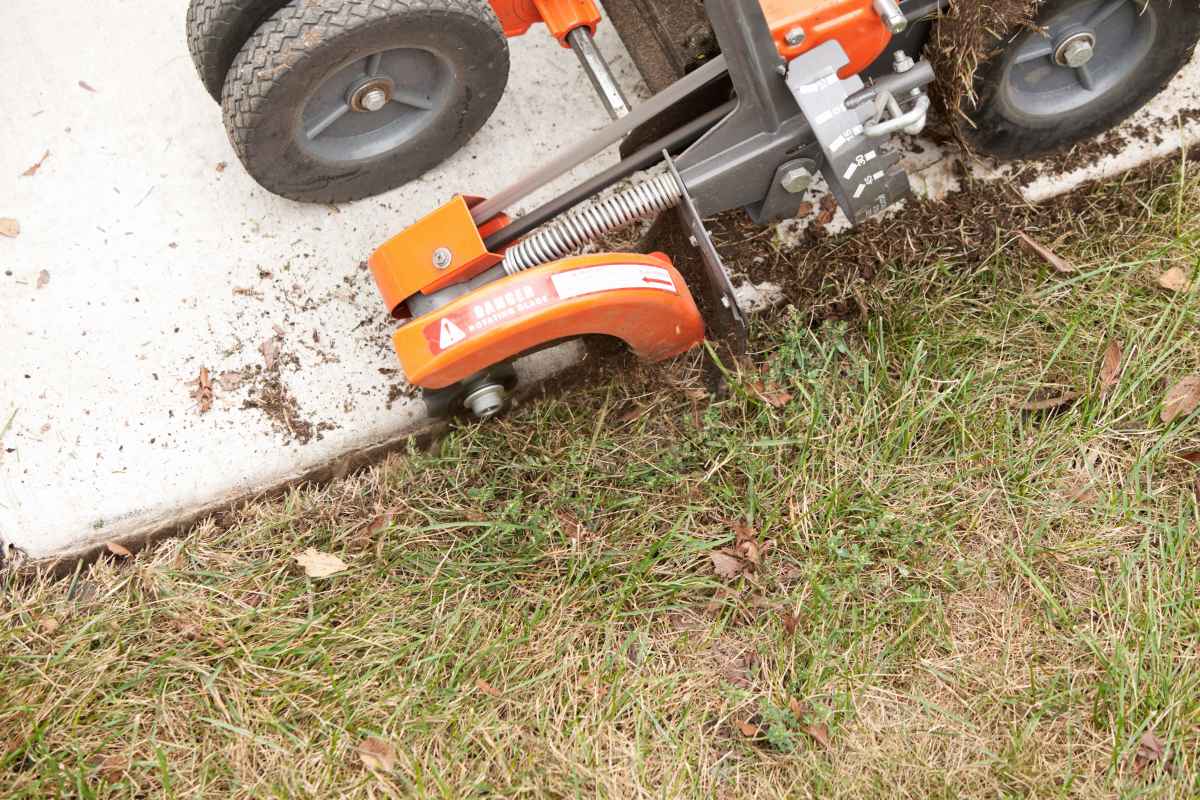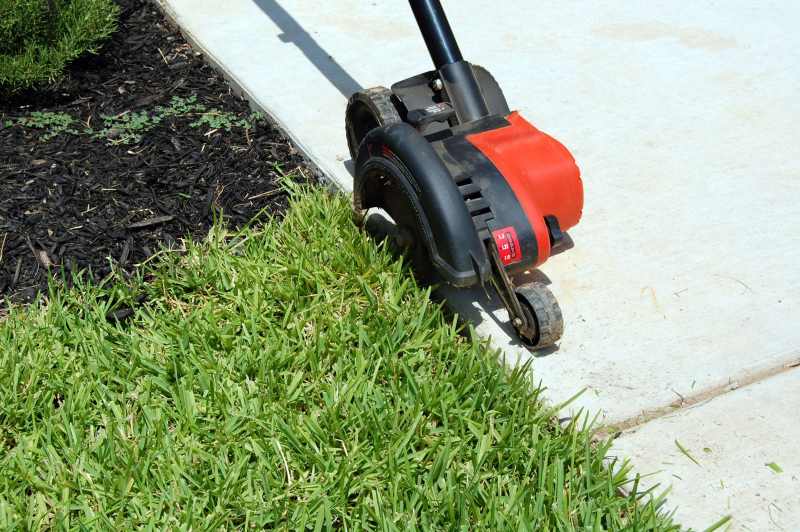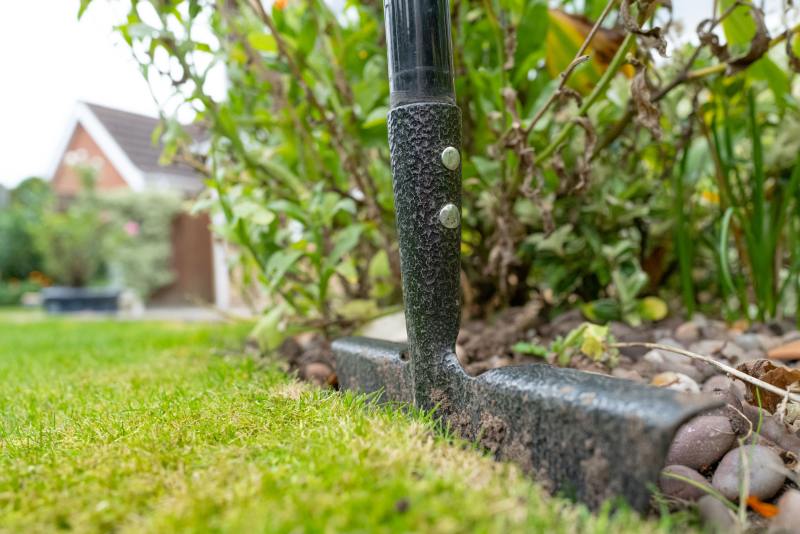
Proper lawn care is more of an art than a chore. Nowhere is that more evident than in lawn edging. Your neighbor’s perfect lawn and crisp edges might make you jealous, but we’ll show you how to edge your lawn like a pro.
With a few simple tools, a little patience, and a lot of practice, you can achieve the clean lines of perfect edging. Here are some DIY techniques professional landscapers use to give flower beds and walkways that manicured lawn look you envy.
‘Cutting Edge’ Tools You May Need

String Trimmer: A quality power edger is an investment, so do your research and don’t skimp on this purchase. Gas trimmers are heavy but ideal for large yards, while electric trimmers are lighter and more eco-friendly. A straight shaft will give you a longer reach and better ability to cut curves than a curved shaft.
Manual Edging Tool: This tool looks a little bit like a shovel but has a flat, half-moon edger blade. For small yards or an aversion to power tools, this tool is the answer.
Manual Rotary Edger: This one looks like a stick with a spiky wheel at its end. The spikes are rotating blades that shear off grass in a line. This tool is used to manually edge grass at the edge of sidewalks or other hardscape surfaces. A manual rotary edger is good for small lawns with thin-bladed grass varieties.
Hand Shears: For the finishing touches, use a hand shears to trim grass in hard-to-mow spots.
Garden Hose or Rope: Use to mark out the edge if you are making new garden beds and need a guide.
A Plank of Wood: You’ll need wood only if you are using a manual edger to do the job.
Lawn Edging Methods
There are only a few ways to go about edging a lawn: using a power edger or weed eater, using a manual edging tool, or a combination of both.
String trimmers sometimes come with edger attachments that can make short work of overgrown grass spilling into walkways and flower beds. These power tools can make the job easier. They can also make a big mess of an edge in no time if you’re not skilled at using them.
Here are some tips for both methods.
Tips for Power Edging

Power edging is more hardcore than manual edging and requires more caution. Follow these steps for a safe, successful experience:
- Wear boots, pants, protective goggles or glasses and earplugs. You may want to add gloves, and if you have pollen allergies a face mask.
- Mow your lawn first to reduce the volume of grass you’ll have to edge.
- Flip the head of your string trimmer or edger so that it is vertical.
- Hold the trimmer at the same level and position for a consistent trim.
- Go slowly, moving from left to right (power edgers spin clockwise) so that debris moves away from your path.
- Slow the trimmer speed on curves to maintain accuracy.
- Use hand shears to tidy up stray blades of grass and bits that aren’t perfectly in line with the edge.
- Sweep up the debris.
- Take a few minutes to clean and dry the blades and surfaces on your tools while the dirt and grass residue is still fresh.
Manual Edging

Mowing with a lawn mower is always the first step in edging. If you are edging in a straight line, you can use a board as a guide. Before you begin, make sure the blade is sharp. If it isn’t, grab a file and go to work.
With your sharp tool in hand, lay your board along the outside of the straight edge you want to cut. Stand on top of the board with one foot to secure it, and then drive the half-moon edger a couple of inches into the turf, using the edge of the board as a guide.
If you’re edging against pavers or a sidewalk, you may come up against the edge, cutting a wedge-shaped bit of turf and earth as you go. Rock the edging blade back and forth and then scoop out the grass and dirt you’ve cut away, depositing them out out of the way to be collected later.
Keep a consistent angle by using the board edge as a guide, and make sure the blade stays nice and sharp.
Susan Harris of Behnke Nursery recommends edging garden beds to avoid high-maintenance mowing around pavers and stone borders. “It’s called a Victorian trench,” she says. “It does what edging needs to do — holds back the lawn from the garden and the garden from the lawn — without being an eyesore in the garden.”
If you’re manually edging along a curved edge, you’ll want to overlap your cuts and double your depth, cutting to a maximum of 6 inches. When you’re finished with flower bed edges, backfill the trench you’ve dug with mulch for a clean, weed-resistant edge.
While it may seem like a lot of work, edging, like aerating and fertilizing should be a part of your lawn care routine. It gives your yard a tidy, professionally managed look and feel, and instantly increases your curb appeal.
And, of course, if you’d rather not tackle edging your lawn, Lawn Love’s local pros can take care of that for you — along with regular mowing, trimming, and lawn treatments.
Main Photo Credit: BanksPhotos | Canva Pro | License